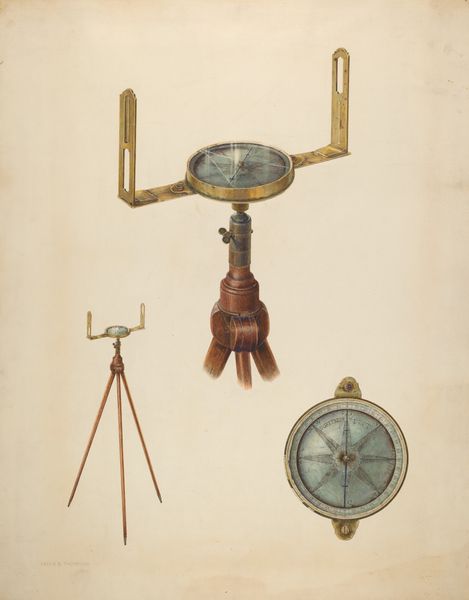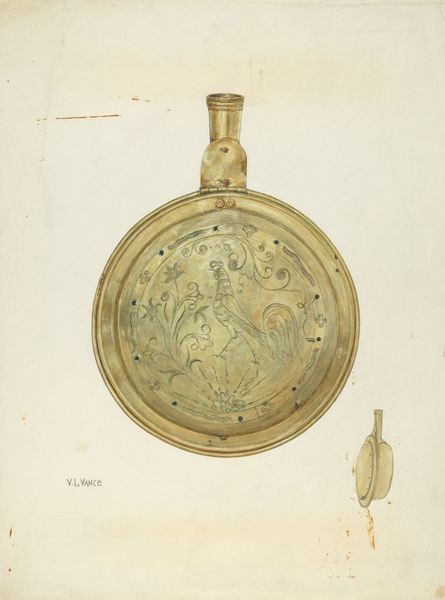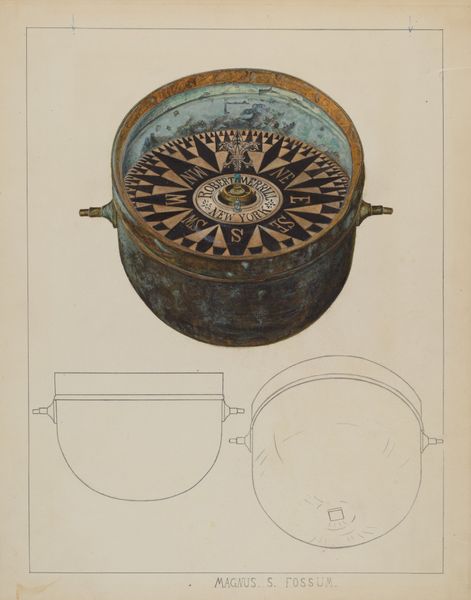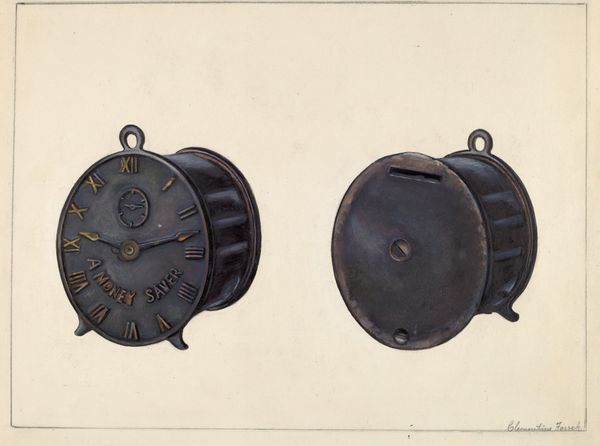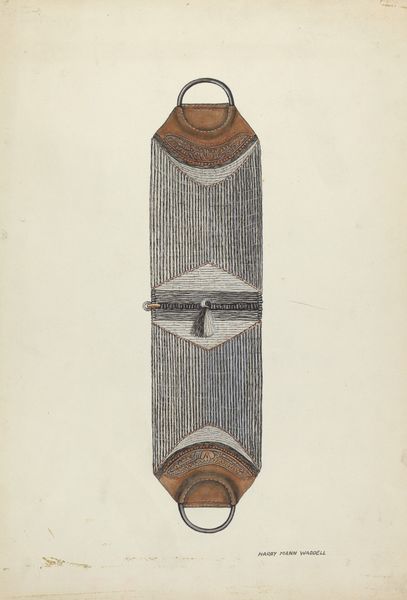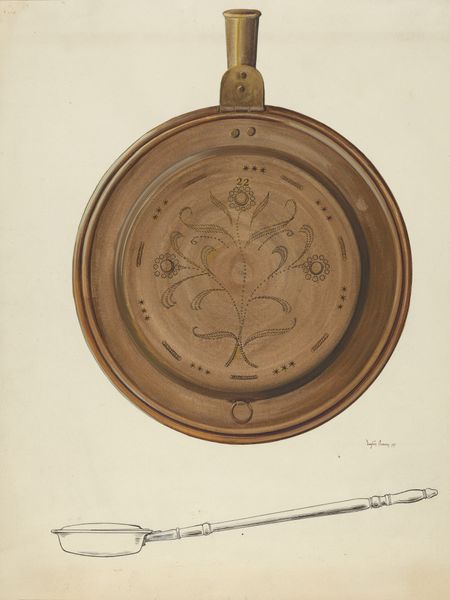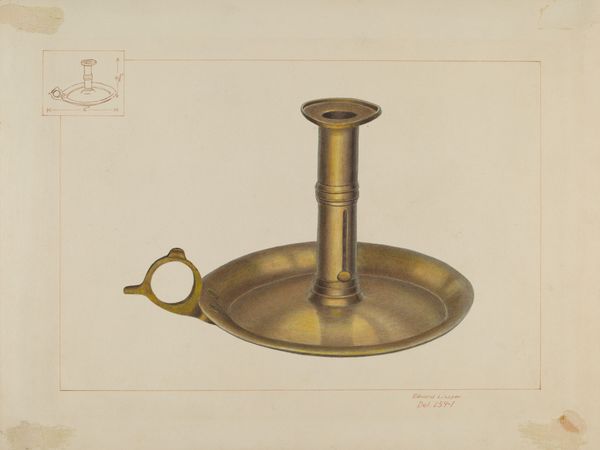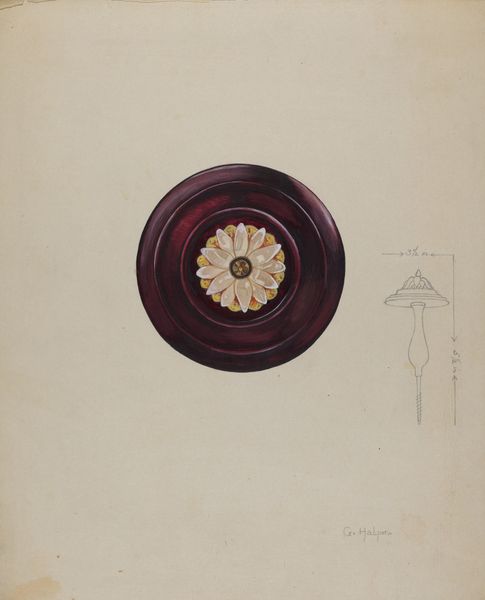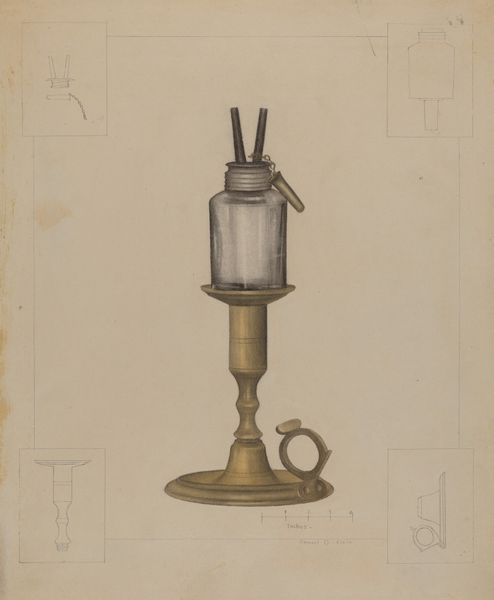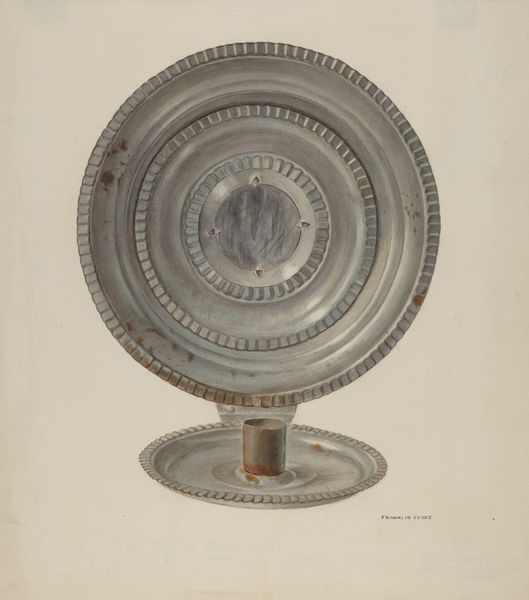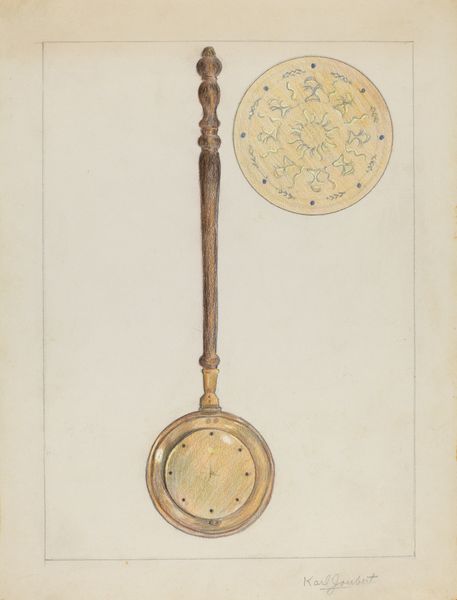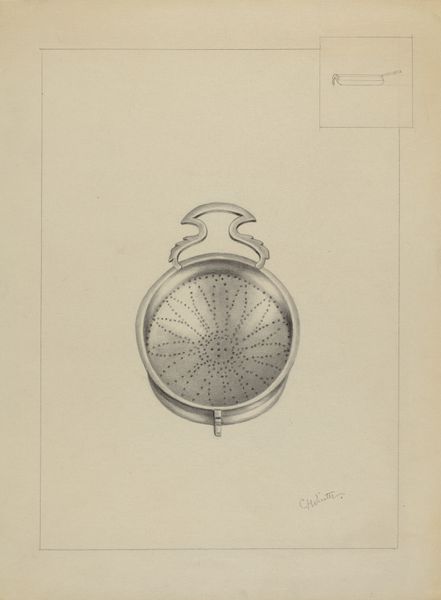
drawing, watercolor
#
drawing
#
watercolor
#
coloured pencil
#
watercolour illustration
#
watercolor
Dimensions: overall: 23.2 x 27.9 cm (9 1/8 x 11 in.) Original IAD Object: 43 1/2" long; 10 1/2" in diameter
Copyright: National Gallery of Art: CC0 1.0
Curator: Alfred Walbeck’s watercolor, "Warming Pan," from around 1937, captures a commonplace object. It gives a view into a pre-electric age. Editor: It strikes me as remarkably well-rendered, a sort of proto-photorealistic illustration of a household object. The warm metallic sheen is wonderfully captured, but also quite sterile given its likely prior life. Curator: Precisely. Warming pans were tools for mitigating domestic cold. It’s key to consider who benefits, and at what cost: comfort predicated on, often, marginalized labor to produce materials. It really emphasizes class divisions. Editor: Good point. Thinking about materials... what sort of work went into the brass itself, from raw ore to crafted object, and then who was tasked with warming beds, carrying hot coals in what was essentially an indoor brazier? We tend to overlook such material circumstances. Curator: And within the composition we can appreciate the contrast of soft watercolor and the very strong lines depicting this warming device: these lines of industrialization meet the delicate and domestic. How does it change a perspective on who could use or create this watercolor of the time? Editor: This piece emphasizes the pan's physical form. Walbeck's technique renders each copper rivet, the patterned perforations on the pan's face, and the polished wooden handle, all revealing an intricate, almost engineered, understanding. Curator: It brings a focus on the historical moment: the interwar period's social anxieties, industrial design's influence. The clean design might signify aspirations toward a modernity yet unequally distributed. This everyday object encapsulates broad economic inequalities. Editor: Looking closer reveals a simple tool, beautifully, if unemotionally, captured in watercolors, that reminds us that design always served an intrinsic social function. Curator: By examining the materials used to construct this piece, along with the history, culture, and even socio-political climate behind Walbeck's piece, we learn more about ourselves, too. Editor: It is fascinating how such simple drawings depicting obsolete technologies provide such insights into our society's current relationship with objects of necessity, as well as artistic endeavors.
Comments
No comments
Be the first to comment and join the conversation on the ultimate creative platform.
